The Data Analytics Knowledge Gap in Customer Experience

What is customer experience anyway?
Customer Experience or CX refers to the engagement and experience of using products or services from a customer’s point of view.
The experience referred to by CX is not limited only to the engagement of the customer when they buy a product. It’s much larger. The “CX” experience surrounds the buying process from the pre-purchase stage through to post-purchase support.
And it’s not just the customer’s direct experience with the product or service that’s important, but also the shopping experience and post-purchase service provided to the customer are crucial. In this way, the customer experience includes direct and non-direct engagements.
The idea is, if your customer enjoyed the shopping experience buying from you, then the customer satisfaction of your service will be great, too. Naturally, that applies to the quality of post-purchase support that your customers receive as well.
Increasingly, more businesses are paying attention to this full-spectrum CX, and it is no surprise that advanced analytics platforms are growing to serve marketers and product managers who have to make their client’s customer experience great.
It is important to approach CX from a customer’s perspective, where brands solve customer’s pain points. The CX strategies driven by company priorities over customer priorities should be avoided.
CMOs are expecting to spend more on customer experience.
In order to understand how serious CX is to marketers, it is interesting to see how CMOs are planning to use their marketing budget.
As you can see from the CMO survey below, CMO’s spending on customer experience is expected to grow 35% in the next three years. So it is clear that CX is something companies will put more emphasis on.
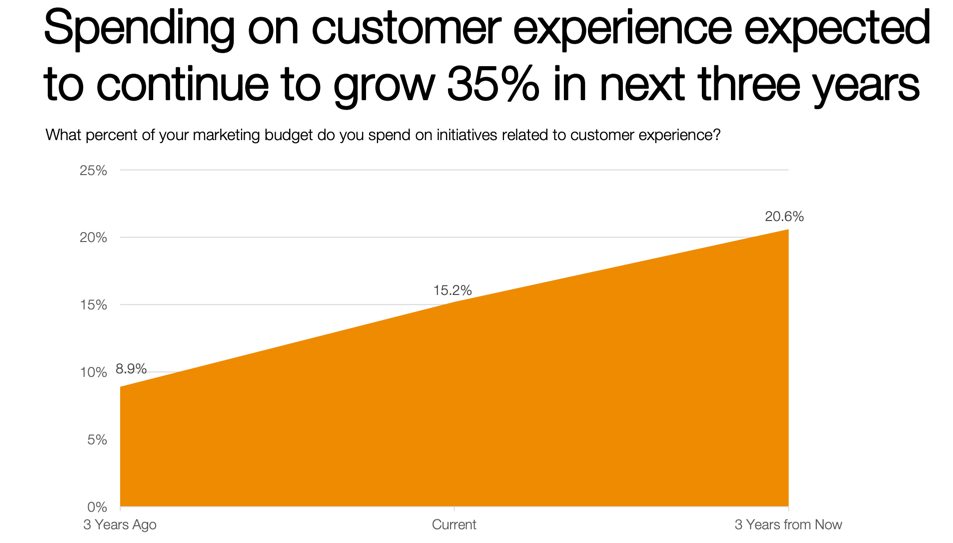
Source: CMO Survey Feb 2020
This survey indicates a shift in executive-suite priorities. As more businesses move from a customer acquisition strategy to increasing customer lifetime value (CLTV), the KPI of those businesses is shifting from cost-per-transaction measurement to cost-per-customer acquired.
Typically, for businesses to grow CLTV, it is important to generate repeat purchases from existing customers. That said, it is crucial to know that customer experience plays a key role in driving higher CLTV. There is a reason why we, as a shopper, keep going back to the same store to buy again.
A key component to owning CX and CLTV is user data. In fact, in our digital environment, data is the “secret sauce” to creating a great customer experience. However, many of the same executives who value customer service don’t necessarily value the role of data.
CMOs do not see Marketing Analytics as a primary contributor to company performance.
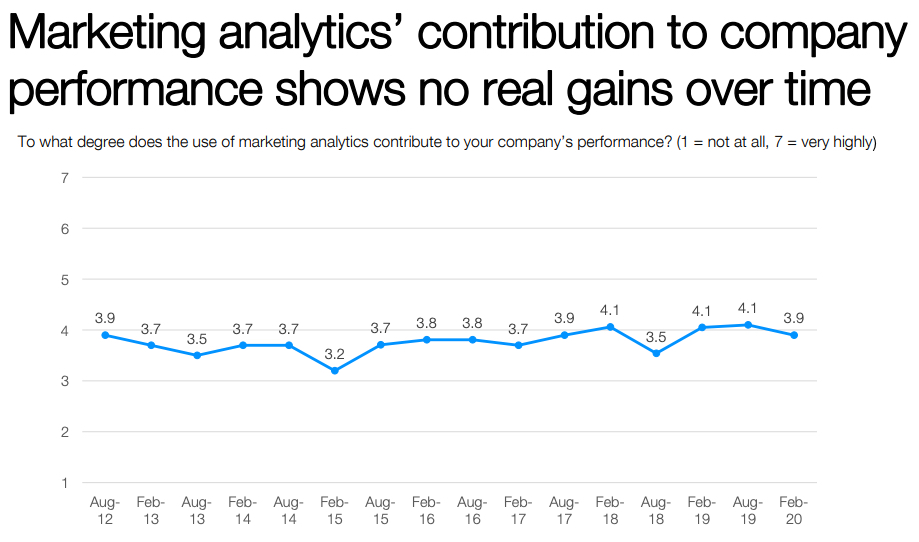
Source: CMO Survey Feb 2020
While we, as data-driven marketers, see analytics as to the blueprint for driving performance success, executive leadership views analytics as having middling importance (3.9 out of 10) and have maintained this perspective for years. In short, marketing attribution’s contribution to business performance is not visible. This lack of attribution visibility is a problem for many companies, especially those spending significant budgets on digital media. As you can see from the CMO survey above, this lack of visibility has been the norm for a long time.
On the other hand, we know that optimizing customer experience is measurable. When you assess user behavior with user-level data, you know exactly who your customers are, how they engage with your brand, and ultimately, purchase.
So, how to close this knowledge gap?
After researching and testing multiple leading analytics platforms, the analytics team at Principle has chosen Heap as its go-to platform for evaluating and understanding customer experience data. With Heap (or a similar platform), marketers and product managers can integrate the data back to their Ad Tech platform and optimize spend so that campaigns run much more effectively. While Heap positioned their service for product managers, it is no surprise that many marketing experts are using Heap. Read on for some examples and tactics we’ve found helpful.
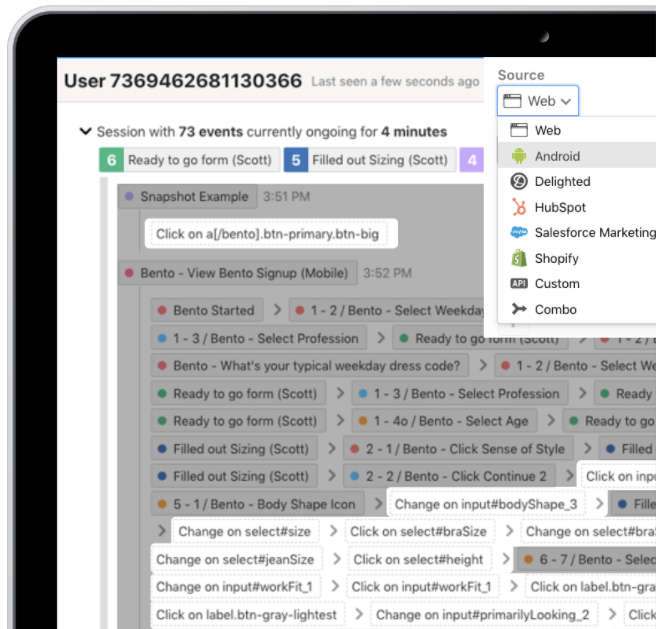
The main question we like to address: Why is CX important for marketers?
We love getting the above question (which we get often). Let’s break it down in the following areas of typical interests for marketers;
- Conversion rate optimization
- Engagement campaign (or Nurturing)
- Increasing customer lifetime value (CLTV)
Conversion rate optimization
The goal here is to increase conversions. For EC websites, it’s the number of transactions or orders. For B2B, it’s most likely growing the number of acquired leads.
Using tools like Google Analytics, marketers typically look at pages with high traffic volume for bottlenecks that hinder the customer’s purchase journey. The typical path includes interest in product pages, shopping cart, billing page, etc.
With Heap, you can analyze the data by different shopper segments with different variables that make up the segment. Combining that behavior data and acquisition source, you can optimize your campaign performance by adjusting the landing pages, offers, ad’s targeting criteria, etc.
For this one particular B2B lead generation campaign, we used Heap to identify opportunities to improve conversions and CPA. We were able to run a few tests and grew the number of leads while lowering the CPA.
In Heap, we’ve segmented users by different campaign criteria that ran across different periods of time. By testing different campaign variables and landing pages, we were able to achieve acquiring leads under a specific CPA target.

Engagement Campaign
Engagement campaigns (or marketing nurture campaigns) entail sharing content or promotional offers to drive customers back to your business and to buy again once a user becomes a customer. For B2B, nurture campaigns provide continuing value to those prospects who have not yet converted to customers.
Using Heap, marketers can quickly / easily / visually analyze how touchpoints from engagement efforts lead to customers coming back to your website to convert and buy.
Following are example steps to generate the report below in Heap:
- Create a conversion event.
- Define the initial event and return event.
- Create a report to track cohorts or data tables that show a segmented view over time.
Below is an example image of Heap’s retention analysis, showing the percentage of users that complete an event after another event. First and returning events are sessions, filtered down to those who converted (submitted form). Data is segmented by those converted users who were in a campaign or not in the past 90 days.
You can see that the converted users have high retention (or revisits) when they were in this campaign. You can further break it down to a more detailed level, but I hope you get the point that Heap can support pretty robust reporting.
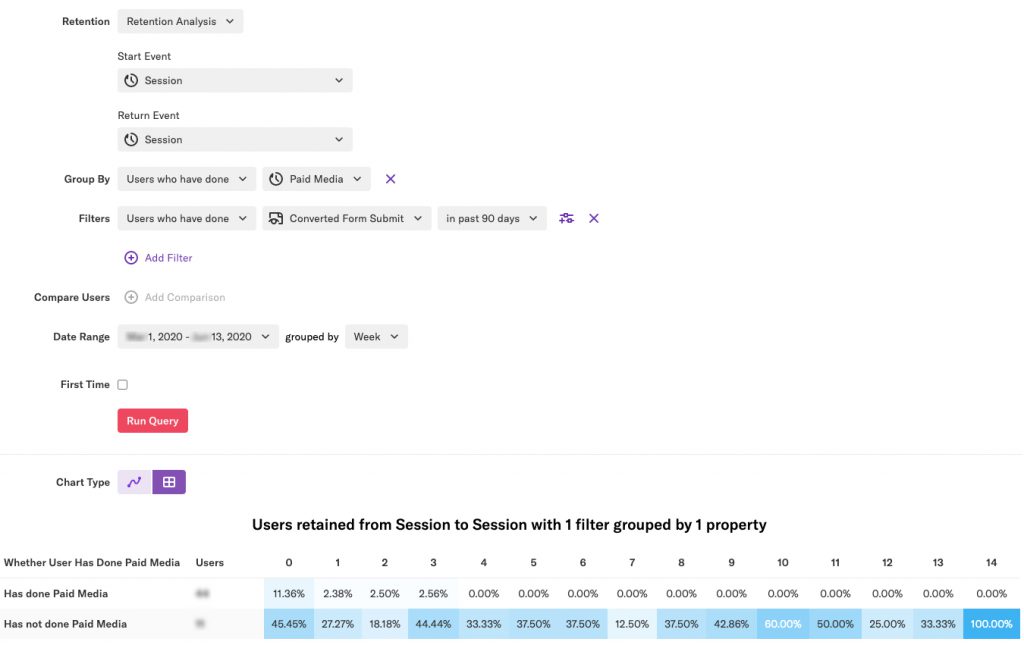
Once you get this kind of report in Heap, you can start building a hypothesis around what content works. Then you can put resources into what works and continue testing new ideas.
Improve campaign ROI with Customer Lifetime Value
It’s not required to use tools like Google Analytics or Heap to track customer CLTV. What would be interesting is to know what marketing tactics or channels that lead to increasing customer value.
Let’s take a look at a paid media example with Google Ads, and it’s “Maximize conversion value bidding.” The following are some facts referenced from the support page, more about “maximize conversion value bidding.”
- “This bidding strategy uses advanced machine learning to automatically optimize and set bids.
- It also offers auction-time bidding capabilities that tailor bids for each auction.”
- Bid adjustments allow you to show your ads more or less frequently based on where, when, and how people search. Because Maximize conversion value helps optimize your bids based on real-time data, your existing bid adjustments are not used.
The key here is that Heap uses machine learning with the value that you want to maximize, such as revenue, profit margins, or CLTV.
With user-level data you get from Heap, you can start using that data as an input variable for the machine learning to predict CLTV. So you’re not only using actual CLTV but predicted CLTV. With that input, you can write the data back to Google Ads and optimize the ads to improve the ROI of your campaign performance.
Following is an example workflow you can use to achieve the data predicted LTV of your customers.
Heap track User-level event data -> Aggregate data -> Google BigQueryML get predicted CLTV -> Write back to Google Ads
1) Load event data into Google BigQuery and aggregate data by each individual customer with LTV data.
2) Use BigQueryML to predict CLTV lift based on historical behavior and shopping data.
3) Use the output to write back to Google Ads.
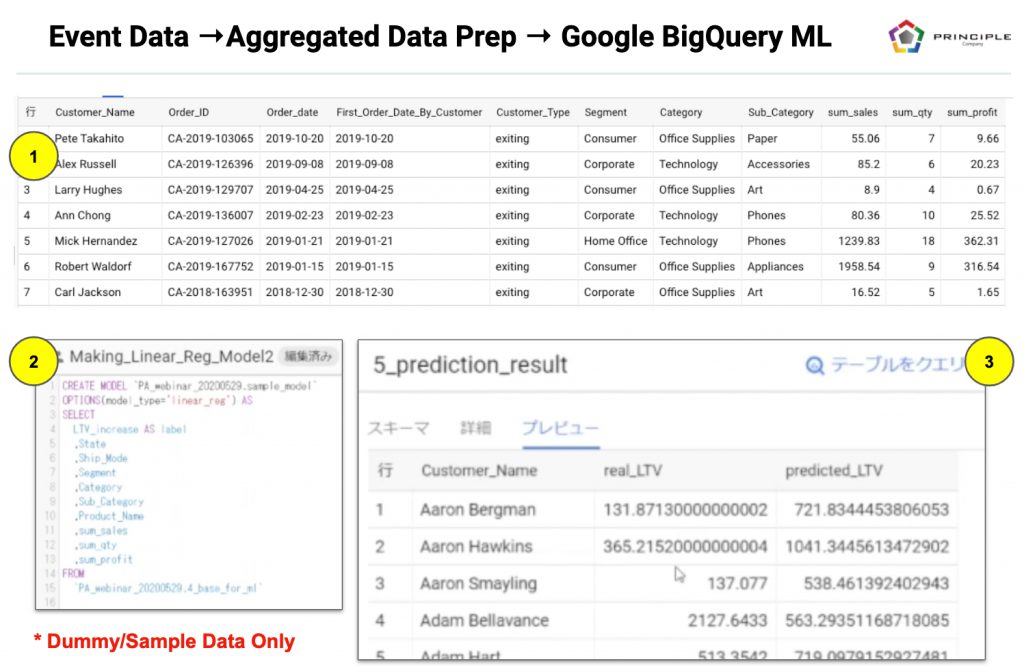
Four benefits of CX when done well with data
In closing, businesses that provide excellent CX can expect measurable and highly impactful benefits, hence why marketers at all levels should care about the data that drives the customer experience. Following is my short-list of the benefits of CX done well with data:
1. Improve Customer Retention (or reduce churns)
There is great value in providing a service that satisfies the customer. If customers don’t receive a satisfying experience when purchasing from a business, they will stop buying from that brand and switch to a competitor.
It is not easy to win back customers once they’ve churned; it could be very damaging to the business. If a customer has defected, it means that they are switching to another brand, which means your competitors could gain more business over yours.
2. Grow repeat customers
Returning customers will buy your products and services without the need for aggressive promotions. And a fan of your brand will spread the positive word for free, which can greatly help a company’s long-term sales. By providing high customer value and increasing customer loyalty, companies can efficiently increase sales from repeat buyers.
3. Improved brand image
If a customer receives a good experience through the use of a certain product or service, it is natural for consumers to feel positive and trust toward your brand.
And this is not just about the same brand, but also about other brands operated by that company. Truly great customer experience has a positive impact on sales for the company as a whole.
Also, a well-branded product or service could help customers spend a little more than what consumers may normally budget for.
4. Effectiveness of advertising from existing customers
If you can continue to provide great customer experience, you will increase customer loyalty. Customers with high customer loyalty transmit favorable information to their networks. The spread of positive word of mouth is proven over and over to be a great benefit to a company’s brand equity.
If customers spread positive word of mouth about a company’s products and services online and elsewhere, it also can promote your products or services without spending on paid media.
Now we can bridge the knowledge gap between CX and digital analytics.

Principle will provide Heap reporting and data visualization services to Product Managers of enterprises and brands. We’re excited to take part in the growing need to support marketers’ need to improve the online customer experience.
Do you need to enable the right marketing data to grow your business?
Good data practice starts with good data collection. At Principle, we enable, integrate, and manage your marketing data. Click here to learn more about our agency services for:
- Data Management Consulting Service
- Data Visualization Services with Tableau and Data Studio
- Google Tag Management Service
- Marketing and Google Analytics Services
Director Analytics
Over 16 years of experience working with data and marketing. As a data expert in marketing, Kris enjoys analyzing data to bring actionable insights and help businesses move forward. Kris has experience working in industries ranging from Tech, SaaS, FinTech, B2B, Mortgage/Banks.
